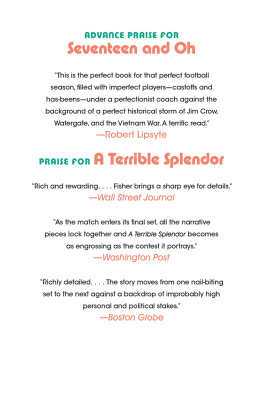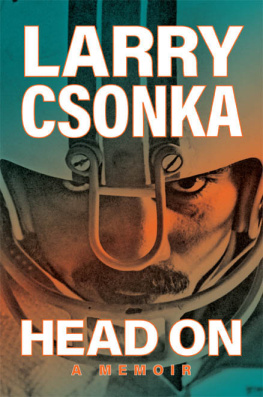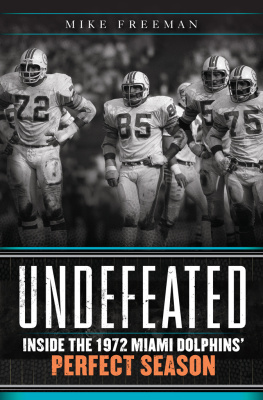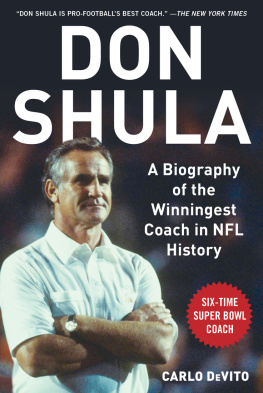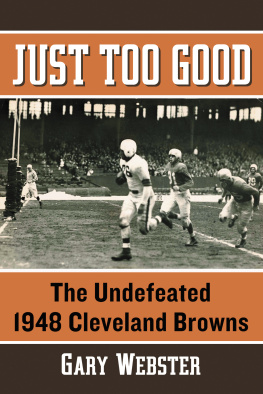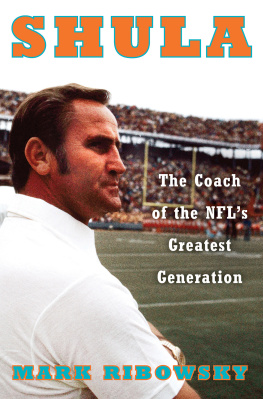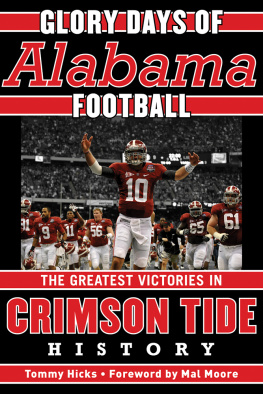Contents
Guide
Page List
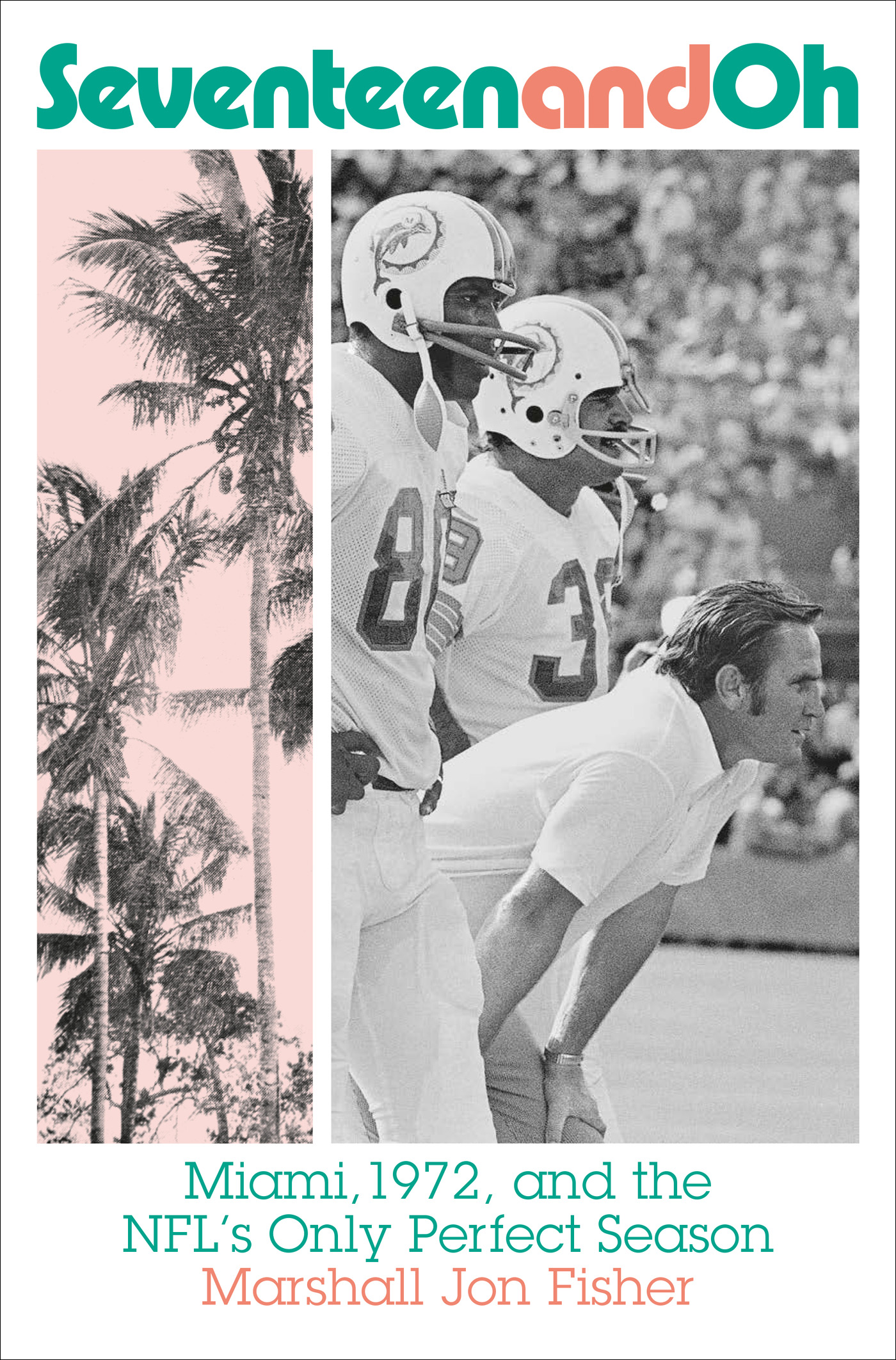
Also by the author:
A Terrible Splendor:
Three Extraordinary Men, a World Poised for War,
and the Greatest Tennis Match Ever Played
A Backhanded Gift
With David E. Fisher:
Tube: The Invention of Television
Strangers in the Night:
A Brief History of Life on Other Worlds

Copyright 2022 Marshall Jon Fisher
Cover 2022 Abrams
Published in 2022 by Abrams Press, an imprint of ABRAMS. All rights reserved. No portion of this book may be reproduced, stored in a retrieval system, or transmitted in any form or by any means, mechanical, electronic, photocopying, recording, or otherwise, without written permission from the publisher.
Library of Congress Control Number: 2022932223
ISBN: 978-1-4197-4850-9
eISBN: 978-1-64700-005-9
Abrams books are available at special discounts when purchased in quantity for premiums and promotions as well as fundraising or educational use. Special editions can also be created to specification. For details, contact specialsales@abramsbooks.com or the address below.
Abrams Press is a registered trademark of Harry N. Abrams, Inc.

ABRAMS The Art of Books
195 Broadway, New York, NY 10007
abramsbooks.com
For Ron
and for Dad: quarterback for both teams
Introduction
Every football season for the past fifty years, there has come a weekend when the last undefeated NFL team finally loses a game. More than half the time, its been in the first half of the season. Usually, its over before Thanksgiving. In 2007, it didnt happen until February of the next year. Whether in early fall or midwinter, though, it always happens. And when it does, there is a group of old football players who cant help but smile. They dont, as rumor once had it, gather together and share a glass of champagne when the final zero disappears from the NFL Standings loss column. But how could they not feel a twinge of satisfaction? They are the surviving members of the 1972 Miami Dolphins, the only team in NFL history to go from opening day to the league championship without losing or tying a game.
The greatest season ever took place in a setting made for Hollywood. Miami in 1972 was a steamy cauldron of politics and sex and culture wars. As both national party conventions came to town that summer, the sidewalks and parks of Miami Beach filled with hippies, Zippies, Yippies, activists, protesters, and tourists gawking at it all. Meanwhile, the Vietnam War raged through the final bloody months of U.S involvement and Richard Nixon spent more and more time at the Winter White House, his modest compound on Key Biscayne, just off the Miami coast.
The relatively new Miami football team, running through its seventh preseason during the conventions, reflected the social dichotomy of the times. There were long-haired, bell-bottomed party animals with historically specific facial hair, like Jim Mad Dog Mandich and Manny Fernandez, along with active liberals like Marv Fleming and Marlin Briscoenot to mention Curtis Johnson with his supernova Afrosharing the locker room with quiet, conservative, straight-laced men, such as the quarterbacks Bob Griese and Earl Morrall. But unlike the fractious society seeming to unravel around them, this diverse group found a way to meld seamlessly into a team. The perfect team.
I was nine years old and finally on board with the Dolphinmania rising all around South Florida. My father and brother had gotten interested in the team the past couple of seasons, especially when it won what is still the longest NFL game ever, against Kansas City in the playoffs the year before, and made it to the Super Bowl (where they were humbled by the Dallas Cowboys).
Over the decades since, I have often wondered if it was merely nostalgia that made me think of this team of my childhood as unique, as having some inimitable combination of talent and character that led it to the greatest gridiron achievement ever. But no, after examining it again over the past few years, I believe this was not just another excellent NFL team. It was a rare combination of mental capacity and toughness, discipline and playfulness, youth and experience, that made for the perfect team. Above all, though, this was an unusually intelligent football team. They later became a doctor, a state senator, a mayor, lawyers, successful businessmen. A sports psychologist who tested them declared that no team had ever scored higher in motivation. And one player who was traded to Green Bay the next year recalled, comparing playbooks, that he felt like hed gone from Harvard back to high school.
Not that they werent tough as nails. During pregame strategy sessions, star fullback Larry Csonka would finally have enough of the subtle strategizing, crinkle his nose, already contorted by a long history of breaks, and say, Lets just line up and knock them on their asses. Another player who was later traded was shocked to find new teammates who wouldnt play with injuries. Our guys would crawl across broken glass with no clothes on to get to the field, he said. That made that team what it was. The Dolphins played the perfect season with chipped teeth, a splintered forearm, a bruised liver, a slipped disc, and broken ribsand that was just one guy, defensive end Bill Stanfill. Others had broken arms, broken noses, you name it. Time would reveal a dark side to such intrepidness. Middle age and beyond would become a minefield of dementia and other concussion-related brain disorders, not to mention constant musculoskeletal pain to remind them of their old job.
It was a team with the poorest owner in the league, a team composed largely of castoffs and has-beens. One of the greatest offensive lines ever was assembled almost wholly from parts other teams had jettisoned. A number of crucial starters shared the scouts dismissal: too small and too slow. One defensive starter almost went to veterinary school instead; another, the son of physicians, arrived via the unlikely NFL breeding ground of Amherst College. It was a team saved by a thirty-eight-year-old over-the-hill quarterback, coached by a forty-two-year-old wunderkind with a leviathan chip on his shoulder. Its noteworthy how often players echoed a similar refrain: I wasnt a gifted athlete, We werent the greatest athletes.... This wasnt really true, but it reflected an emphasis on intelligence, teamwork, and a work ethic forged in the struggles of many of their parents, immigrants in the American Midwest.
The fruits of that labor unfolded in the unlikeliest of places. The Greater Miami area was a quiet, relatively uncrowded sprawl of communities, a far cry from what it would become in the 1980s and beyond. The name Miami still evoked snowbirds in polyester suits playing shuffleboard on the beach, rather than fashion models and cocaine. Previous attempts at pro football in Florida had failed miserably, and the Dolphins franchise, the states only major professional sports team, was still so young that most elementary school kids could remember its first season.
Nineteen seventy-two, despite ever-present racial and political tensions and continued national divisiveness about the war in Vietnam, was a simpler time in America. A simpler era in football, too, free of the trappings of a billion-dollar business. Not that the early seventies was a utopia of peace and harmony. The Dolphins marched to perfection in a season of war, political corruption, and barely veiled racism. But Don Shula managed to integrate his teamat least during business hoursand instill a sense of dedication and purpose that blinded them to anything that might distract them from his obsession, which became

